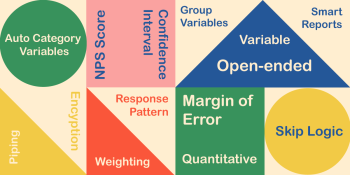Does the survey mode you choose have an impact on survey response rates?
 Does the survey mode you choose to distribute your questionnaire – online survey, mobile survey, paper survey, kiosk survey, or one-on-one interview – have an impact on survey respondents, and ultimately, survey response rates? How about using a combination of survey modes (i.e. mixed-mode, multiple-mode)? The answer is yes.
Does the survey mode you choose to distribute your questionnaire – online survey, mobile survey, paper survey, kiosk survey, or one-on-one interview – have an impact on survey respondents, and ultimately, survey response rates? How about using a combination of survey modes (i.e. mixed-mode, multiple-mode)? The answer is yes.
It can be very difficult to estimate the level of survey participation as response rates vary depending on a wide variety of factors. For example, survey design, survey length, question wording, and preferred survey mode can all impact response rates.
Let’s focus on survey mode. Your response rates will weigh heavily on your desired audience demographics (age, location, gender, etc.). But, if you take the time to identify these factors, you can take action to improve your response rates by identifying the survey mode(s) that will best reach your audience – giving you more statistically relevant data.
It’s no surprise that there has been a rise in mixed-mode surveys where multiple modes are used to distribute surveys to survey respondents. The increase in mixed-mode surveys has been driven by several factors, including:
- declining response rates
- coverage problems when using a single-mode survey; and
- the increased popularity and use of online and mobile surveys
Because there are now a variety of survey methods available, researchers can determine the best survey mode or combination of survey modes to fit the needs of each particular research study and the sample population to be surveyed.
Regardless of the survey mode you choose, if you are just throwing your survey out to respondents, without defining your audience or survey purpose, you’re going to get a poor response rate. For best results, define your survey purpose (what information do you want to gain from the survey), keep the survey length short, define the target audience demographics, and choose a survey mode or modes that are in line with your audience.



